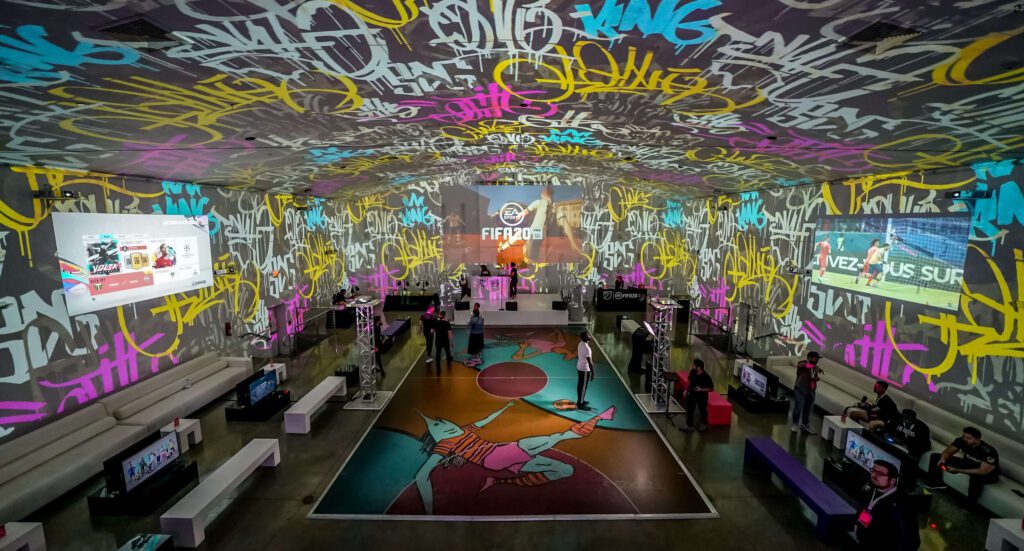Game designers rely on the combination of art and technology to create immersive game worlds that engage players. While technology plays a crucial role, art is fundamental and gives games their uniqueness and appeal. Game engines and advanced tools such as 3D modelling software enable game designers to create realistic physics, AI behaviour, and graphics which simulate the real world. Game designers must be creative, flexible, and skilled in both art and technology to create engaging game worlds. As technology continues to evolve, new techniques such as machine learning and virtual reality are being used in gaming to create even more impressive game worlds.
The Intersection of Art and Technology: How Game Designers Employ Both to Create Immersive Worlds
Introduction
Games are more popular than ever, with millions of people around the world spending hours each day playing them. From action-packed shooters to mind-boggling puzzles, games offer a variety of experiences that mimic and extend our reality. However, the success of a game relies heavily on the immersive worlds created by game designers. The creation of such worlds involves combining the power of art and technology.
The Basics of Game Design
Game design involves the creation of a virtual world that the players can enter, interact with, and enjoy. Game designers typically use a wide range of tools and technologies to bring these worlds to life, from game engines to 3D modelling software. However, while the technology plays a crucial role in game design, it is the art that gives games their uniqueness and appeal.
Art is a fundamental part of game design, from the concept art to the final product. Game designers must consider several aspects of art, including colour, texture, form, and composition. They must also use their creativity and imagination to develop characters, stories, and environments that delight and immerse the players.
The Role of Technology in Game Design
Technology has transformed the way that games are made. Game engines such as Unity and Unreal Engine, for instance, rely on powerful programming languages such as C++ and C# to create an interactive 3D world environment. Such engines enable game designers to create worlds with realistic physics, AI behaviour, and graphics that simulate the real world. They also help game designers create the lighting, shading, and special effects which make the game world more appealing.
In addition, game developers use advanced tools, such as 3D modelling software, to create the game’s assets, characters, and other elements. They use animation software to give characters realistic movements and behaviours, and game engines to give them a sense of interaction with the other elements of the game environment.
The Marriage of Art and Technology in Game Design
The relationship between art and technology in game design is symbiotic. Game designers need to combine both elements to create an immersive, engaging experience for players. When art and technology are used in harmony, they produce games that are visually stunning, technically sophisticated and engaging.
The art and technology work together to create a seamless experience that draws players into the game world. The sound effects, characters, and the landscape must all work together to create an immersive world that keeps the player engaged. Game designers must therefore ensure that the art and technology are seamlessly integrated throughout the game.
The Creativity of Game Designers
Game designers must be creative, flexible, and skilled to create engaging game worlds. They must also have a strong understanding of both art and technology to create realistic game landscapes that motivate players to engage with the game.
To create immersive worlds, game developers must be able to bring their imagination to life. They must be able to leverage the power of technology to make their ideas a reality, and use art to create a unique experience that stands out in a crowded market.
The Future of Game Design
As technology evolves, game design will continue to evolve too. New techniques, such as machine learning and virtual reality (VR), are already being used in the creation of immersive game worlds. The use of VR technology, for example, is seen as one of the next big moves in gaming where players will be able to completely immerse themselves in a game world and experience it completely.
In conclusion, game design is about the combination of technology and art. Game designers must be skilled in both art and technology to create engaging, immersive game worlds. They must be creative, flexible, and able to bring their imagination to life. By embracing the intersection of art and technology, game designers can create games that are visually stunning, technically sophisticated and highly engaging. The future of game design will be about exploring the new immersive technologies, which are rapidly emerging, to create even more impressive game worlds.
